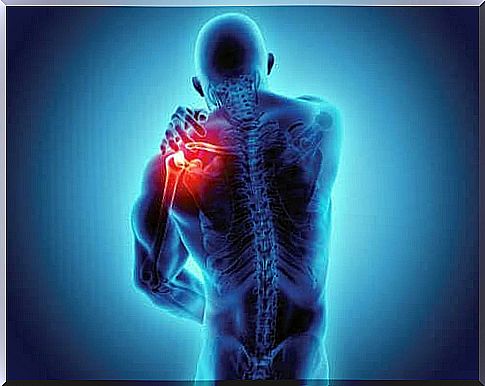Spondyloarthropathies: Symptoms And Diagnosis

In general, spondyloarthropathies refer to inflammatory arthritis related diseases. However, we can identify several pathologies belonging to the group of spondyloarthropathies.
They all have fairly common symptoms. We can therefore group the symptoms that you will discover below within the concept of spondyloarthropathies.
What are Spondyloarthropathies?
As the article ‘Pathogenesis of seronegative spondyloarthropathies’ (Spanish link) states, they form a group within inflammatory arthritis. If the diagnosis is seronegative, it means that it has no impact on the peripheral and atlanto-axial joints, enteritis and extra-articular joints.
But which diseases actually fall under the group of spondyloarthropathies? This is something mentioned in the article ‘Spondyloarthropathies. Usability of classification criteria’ discusses (Spanish link). Let’s see what diseases we are talking about here.
- Ankylosing Spondylitis. A chronic rheumatic disease.
- Psoriatic arthritis. A chronic inflammation of the peripheral joints, spine and entheses, combined with the presence of psoriasis.
- Juvenile spondyloarthritis. Same as above, but this affects young patients.
- Reactive arthritis. An inflammation of the joints that occurs as a result of an infection.
- Enteropathic Arthritis. Associated with Crohn’s disease and inflammatory ulcerative colitis (UC).
The group of spondyloarthropathies also includes undifferentiated spondyloarthritis. Although it refers to a group of patients with characteristics that make doctors suspect this disease, the diagnostic criteria do not allow them to be placed in the preceding groups.
Symptomatology
Now that you know which diseases are in the group of spondyloarthropathies, let’s share the symptoms that are characteristic of this group. Despite the fact that, as we have explained above, there are several related diseases, they usually show the symptoms that we will mention below:
- Pain in the lower back. Usually this is the main warning sign that something is wrong.
- Pain and swelling. This occurs in the arms and legs. Yet it is not a common symptom.
- Spinal Fusion. It is a result of ankylosing spondylitis, which causes lower back pain.

These are some of the symptoms. However, as we mentioned above, psoriasis or Crohn’s disease can also occur, which can be associated with spondyloarthropathies. It is important to see a doctor if you feel uncomfortable. This way, he or she can request the appropriate tests and make a diagnosis.
Diagnosis
As soon as you visit your doctor for any of the symptoms we have explained above, he or she will ask for a series of tests. First, your medical history will be taken, followed by a physical exam. If this is not enough, there are other options:
- X-ray. This allows the doctor to see the changes that have occurred in the joints. However, if the changes are very recent, they may not be fully noticeable yet.
- Magnetic resonance. It allows doctors to detect the early signs of spondyloarthropathies that cannot be seen on an X-ray.
Normally, before doing these tests, doctors ask for a blood test. The reason is that if the HLA-B27 genetic marker is detected in the blood, it is likely that the patient is suffering from spondyloarthropathy. However, an X-ray or MRI is still needed to confirm this.
How are spondyloarthropathies treated?

Now that you know a little more about this group of conditions, you may be wondering about the treatment options.
If spinal fusion is involved, the obvious choice is surgery. In other cases, if the condition is not serious, medical professionals mainly resort to:
- Exercises that promote joint flexibility and mobility.
- Medicines that help reduce pain and inflammation.
- In severe cases, total or partial replacement surgery is required.
In short, an early diagnosis of spondyloarthropathy allows you to take the necessary measures to avoid having to undergo surgery. However, this is not always easy, because you can attribute the pain to bad posture, for example.
This article aims to make people aware of the importance of always seeing your doctor instead of guessing. Early treatment can prevent many problems in this type of situation.









